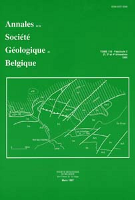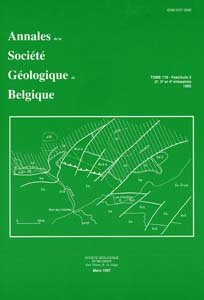- Accueil
- Publications spéciales = special publications
- Gisements stratiformes et provinces cuprifères - C...
- Low temperature copper geochemistry: gitological aspects
Visualisation(s): 594 (22 ULiège)
Téléchargement(s): 894 (27 ULiège)
Low temperature copper geochemistry: gitological aspects

Abstract
The geochemistry of copper at low temperatures is considered with particular reference to the problem of the formation of stratiform copper sulfide ore deposits.
Four approaches are used including low temperature thermodynamic analyses of major copper-bearing aqueous systems; low temperature aqueous experimentation; a review and critical synthesis of analytical data from the major natural copper reservoirs and the construction of dynamic mathematical models of potential ore-forming processes.
Dissolved copper occurs in open ocean water mainly as undissociated cupric carbonate. Copper from continental run-off is largely precipitated in near-shore areas and may be separated from related transition metals. Biological processes are important to the copper economy of freshwater systems but their significance in modifying open ocean copper concentrations is uncertain. The major copper reservoir in the hydrosphere is contained in subsurface waters.
Chloride-rich subsurface waters are also possible carriers of dissolved cuprous copper, which is unstable with respect to water in most natural aqueous systems. Monovalent copper may also be stabilized by ammonia and organic complexes in sedimentary environments.
Cupric salts react with sulfide at low temperature to precipitate cupric sulfides. Direct precipitation of cuprous sulfides only occurs from solutions containing cuprous salts.
Potential ore-forming processes may be investigated by the construction of dynamic mathematical models. Biogenic synsedimentary copper sulfide ores are possible, providing a copper source over and above that in normal open ocean water is available.
Direct application of the data accrued from the discussions of copper geochemistry suggests three systems of immediate interest as potential environments for stratiform copper sulfide ore formation: the sediments of active oceanic ridges, partially connate subsurface water systems, and near shore organic-rich sediments supplied by run-off from adjacent mineralized continental areas.
Pour citer cet article
A propos de : David T. Rickard
Geologiska Institutionen, Stockholms Universitet, Sweden.






